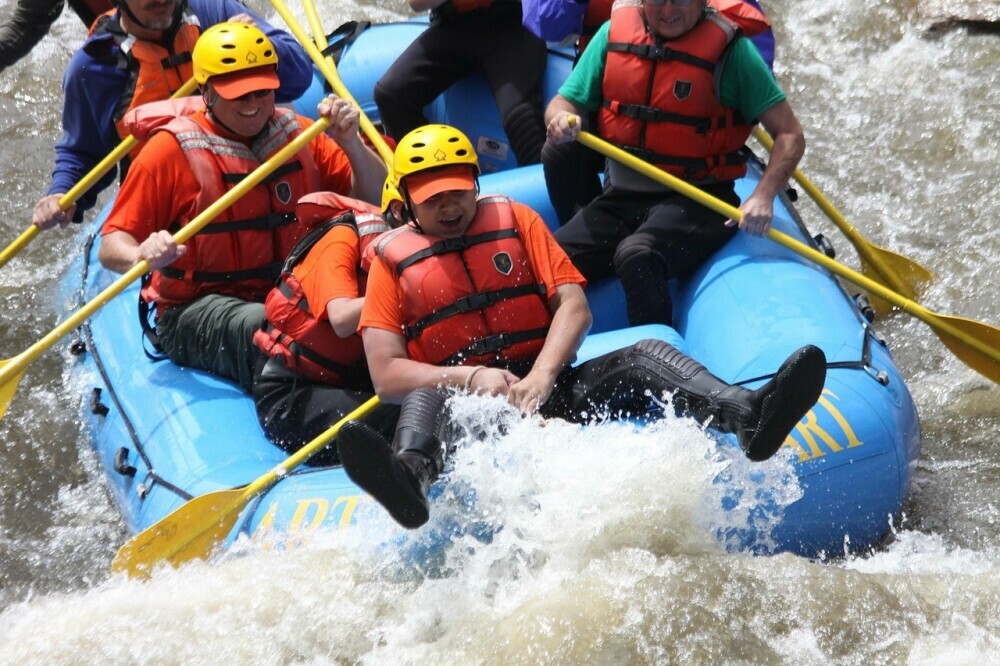
Embarking on the Journey: An Introduction to Whitewater Rafting
Whitewater rafting is an exhilarating adventure sport that has surged in popularity over recent decades. This thrilling activity involves navigating an inflatable raft down a river with rapids. The power of the current, combined with the challenge of maneuvering the raft, creates an unforgettable experience that combines physical activity, teamwork, and breathtaking scenery.
The origins of whitewater rafting can be traced back to early explorers who used rudimentary rafts to navigate treacherous rivers. Today, whitewater rafting is enjoyed by people of all ages and fitness levels around the world. From the mighty Colorado River in the Grand Canyon to the cascading falls of New Zealand’s Shotover River, there are countless rivers offering rafting adventures for every skill level.
Many people considering whitewater rafting have misconceptions or safety concerns. It’s important to remember that reputable rafting companies prioritize safety and provide all the necessary equipment and training for your trip. Life jackets and helmets are mandatory, and experienced guides are always present to ensure a safe and enjoyable experience. In terms of physical requirements, while a base level of fitness is helpful, most rafting trips can be enjoyed by people in reasonably good health. Rafting companies typically offer a variety of trips with varying difficulty levels, so you can find an adventure that suits your experience and fitness level.
Beyond the adrenaline rush, whitewater rafting offers a multitude of benefits for both physical and mental health. The paddling involved provides a great upper body workout, while navigating the rapids requires focus and coordination. The experience can be incredibly empowering, fostering a sense of accomplishment and boosting confidence. Being surrounded by nature and the camaraderie of a group rafting trip can also significantly reduce stress and improve overall well-being.
Preparing for the Rush: How to Gear Up for Your First Rafting Adventure
So, you’ve decided to embark on your whitewater rafting adventure? Here’s what you need to know to prepare:
- Essential Equipment and Clothing: Most rafting companies provide all the necessary equipment, including the raft, paddles, and life jackets. However, you’ll typically need to bring your own swimwear, a quick-drying change of clothes, sturdy water shoes with good ankle support, and a sunhat. Sunscreen and sunglasses are also essential, and depending on the water temperature, a wetsuit or rashguard may be recommended.
- Choosing the Right Rafting Trip: As a beginner, opting for a Class I or II rapids trip is ideal. These rapids are splashy but manageable, providing a great introduction to whitewater rafting. As you gain experience, you can progress to more challenging rapids.
- Training and Physical Preparation: While intense training isn’t necessary, some basic exercises to strengthen your upper body and core can enhance your paddling experience. Most importantly, listen to your body and don’t hesitate to ask for help from your guide if needed.
- Understanding River Rapids Classifications: The International Scale of Difficulty classifies rapids from Class I (very easy) to Class VI (extremely difficult). A Class I rapid is essentially moving water with few obstacles, while a Class VI rapid is extremely dangerous and requires expert kayakers. For beginners, a Class I or II trip is ideal, offering a manageable and exciting introduction to whitewater rafting.
Navigating the Currents: Mastering the Techniques of Rafting
Your rafting adventure will be guided by experienced professionals who will provide all the necessary instructions. Here’s a basic overview of what to expect:
- Paddling Techniques: The raft guide will instruct you on basic paddling techniques, such as forward paddling, backward paddling, and bracing. Working together as a team with coordinated paddling is essential for navigating the rapids effectively.
- Teamwork and Communication: Communication is key on the water. Listen to your guide’s instructions and follow their commands. Working together as a team will ensure a smooth and enjoyable ride.
- Common Challenges and Emergencies: While rafting companies prioritize safety, it’s always helpful to be aware of potential challenges such as falling overboard or encountering a particularly rough rapid. The guides will train you on how to respond safely in such situations. Always prioritize safety and follow your guide’s instructions.
- The Role of the Raft Guide: Your raft guide is your captain on the river. They are experts in navigating rapids and ensuring your safety. Trust their expertise, listen to their commands, and don’t hesitate to ask them questions.
Beyond the Thrill: Preserving Rivers and Promoting Sustainable Rafting
Whitewater rafting allows us to experience the raw power and beauty of rivers. However, it’s no good just thinking about it, you need to organise your trip NOW!

